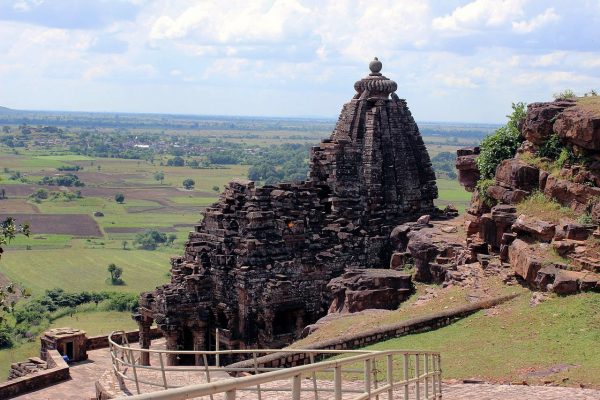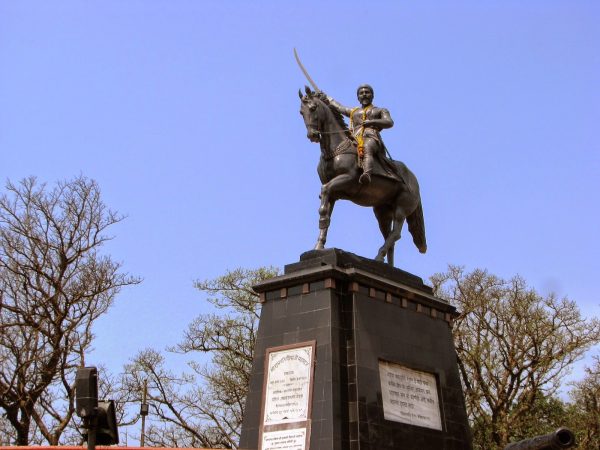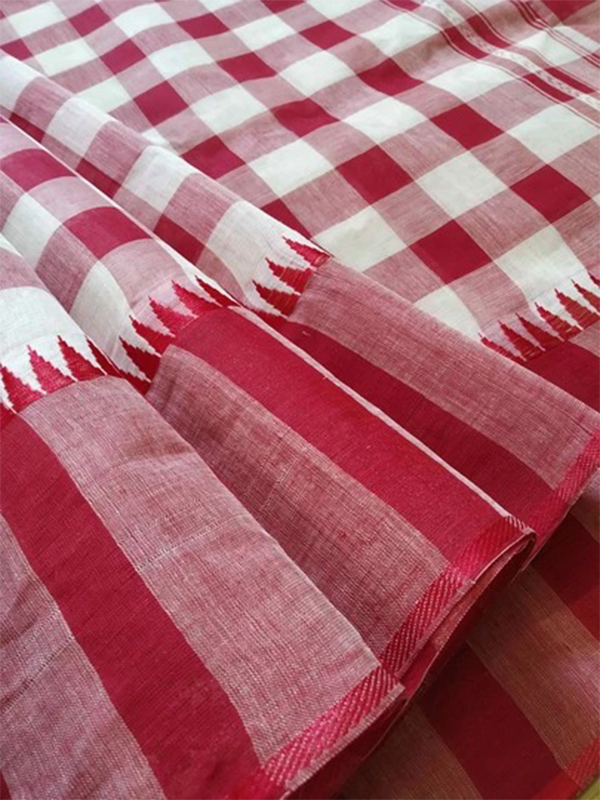One of the lesser-known architectural masterpieces of the Gurjara-Pratihara dynasty is the Maladevi Temple located on the eastern edge of a steep slope overlooking the Manosarovar Talab in Gyaraspur. As this late 9th century temple is hardly a kilometre away from Hindola Torana, one can question if these two temples though built at different times... Continue Reading →
Hindola Torana, Gyaraspur Tehsil, Vidisha District, Madhya Pradesh
Since the ancient times, Vidisha has been written about as a city of unparalleled art, architecture, literature, culture, opulence, riches and knowledge. The influence of the earliest dynasties that ruled over north and central India is seen in the remnants of sculptures, temples, halls and other structures across Vidisha. One of the lesser-known dynasties... Continue Reading →
On the history trail: Nadir Shah invited to invade India by the Mughal Invaders
If ever awards for stupidity were to be handed out, it is highly likely that Aurangzeb would confer one for himself and award the rest to his incompetent descendants. By the end of his reign, Aurangzeb who had waged war with the Marathas for twenty-five years and had only pyrrhic victories to his credit undid... Continue Reading →
On the history trail: Tulja Bhavani and The Battle of Pratapgad
The capture of the hill forts of Purandar, Kalyan and Bhiwandi and the death, ruin and defection of feudatories like the Mores of Javli and the Sawants of Wadi respectively effected by Chhatrapati Shivaji Maharaj and his able aides brought the crippling Bijapur kingdom to its knees. The construction of the new hill fort of... Continue Reading →
Kurumbera Fort, Gaganeshwar Village, Paschim Medinipur District, West Bengal
An interesting fort complex built during the glory days of Bengal relegated to obscurity is the Kurumbera Fort which is at a little distance from Kharagpur. Kurumbera Fort which derives its name from kurum which means stone and bera which means fence and collectively means an area fenced by stone in the local language is located in the historically... Continue Reading →
Santipore Saree of West Bengal
One of the most exquisite weaves in cotton and silk is found in the Bengal heartland of Shantipur - Phulia. Called as Shantipuri, this centuries-old tant (traditional Bengali saree) derives its name from Shantipur in Nadia district. The ancient handloom industry in Shantipur has been mentioned in manuscripts glorifying the life of Advaita Acharya as... Continue Reading →
Eathamozhy Tall Coconut of Tamil Nadu
A rare type of tall coconut variety with immense historical, religious and commercial importance known locally as Eathamozhy or Eathamozhi tall coconut thrives in Kanyakumari district. The unique morphological traits found in this variety are of a superior genetic constitution and it is unsurprising that there is great demand for the seedlings of Eathamozhy tall... Continue Reading →
On the history trail: Chandashoka and The Kalinga War
Along with the wily Chanakya, Chandragupta Maurya, the founder of the Maurya dynasty built one of the largest empires in Akanda Bharat. He abdicated the throne in favour of his son Bindusara who was equal to the task. Bindusara not only consolidated the control over the empire but also extended it further south. Travellers' documentation and... Continue Reading →
Nibiya Khera Temple, Bhadwara, Kanpur Dehat District, Uttar Pradesh
One of the best-preserved brick temple complexes of the 9th - 10th century is found in the sleepy village of Nibiya Khera in Bhadwara. Though no inscription has been found, it is likely that the Gurjara - Pratihara dynasty who ruled over a large part of Northern India built this temple. This temple complex... Continue Reading →
Karnagarh Rani Shiromani Fort, Karnagarh Village, Paschim Medinipur District, West Bengal
The historically important village of Karnagarh in Medinipur district which was once the seat of the Midnapore royal family is most famous for its Chuar Bidroha, a rebellion led by Rani Shiromani, who is called as the Rani Laxmibai of Medinipur against the highly exploitative land revenue policy of the British in 1798. The British were... Continue Reading →
Dhaniakhali Saree of West Bengal
One of the most beloved traditional handloom sarees of West Bengal is Dhaniakhali saree deriving its name from the place Dhaniakhali in Chinsurah subdivision in Hooghly district. Hooghly district is home to some of the oldest cottage industries like silk and cotton handloom weaving, brass and bell metal manufacturing, oil pressing, village tanning and others.... Continue Reading →
Erode Manjal (Erode Turmeric)
Erode, popularly called as the 'Turmeric City' is the third largest turmeric market in India after Nizamabad in Telangana and Sangli in Maharashtra. There are approximately 30,000 farmers in Erode alone and around 55,000 farmers in Tamil Nadu engaged in the cultivation of turmeric. According to historical records, turmeric was grown by peasants in... Continue Reading →
On the history trail: Veer Baji Prabhu Deshpande and The Battle of Pavan Khind
The resounding victories of Chhatrapati Shivaji Maharaj at Pratapgarh and Panhala was very difficult for Ali Adil Shah II of Bijapur to stomach since he had been at the receiving end of many humiliating routs. He decided to join forces with the Mughals to either capture young Shivaji or if possible, even kill him in... Continue Reading →
Indralath Temple, Ranipur Jharial, Balangir District, Odisha
The temple town of Ranipur Jharial in Balangir or Bolangir district is renowned for its prowess in Tantra Vidya. This historical town of inestimable importance was part of Dakshin Kosala where Lord Rama spent a great deal of his time. Ranipur Jharial is mentioned as Soma Tirtha in the scriptures and deemed to have many... Continue Reading →
Kachari Fort, Khaspur Village, Cachar District, Assam
Tucked away in the beautiful village of Khaspur in Cachar district are the ruins of the centuries-old fort of the Kachari kings. Cachar, derived from the Dimasa word kachari was originally a part of the ancient Tripura kingdom and then passed on to the Koch kingdom, the Dimasa kingdom and finally to the British. ... Continue Reading →
Madur kathi, West Bengal
Medinipur or Midnapore, considered to be one of the largest districts of West Bengal after independence is rich with ancient history, archaeological sites, culture and heritage that is deeply influenced by the royal families. It is home to some of the oldest crafts that date back to the Indus Valley Civilization. One among them is... Continue Reading →
Kaji Nemu, Assam
One of the most famous produce of the North eastern state of Assam is Kaji Nemu also called as Assam Lemon. Assam has as many as seventeen species, fifty-three varieties and probably seven if not more hybrids of citrus. Locals say that this variety originated as a chance seedling raised in a plantation, Burnihut... Continue Reading →
On the history trail: Maratha Navy and The Battle of Basrur
The Kanara coast which extends from Majali in the North to Someshwar Mangaluru in the South was controlled by Sondha and Bednore chiefs who though, were feudatories of Bijapur had become independent after the death of Mohammad Adil Shah. The Europeans were slowly but steadily stamping their importance and power over this coastal area by... Continue Reading →
Baba Bhusandeswar Temple, Bhograi Village, Balasore District, Odisha
One of the largest Shiva Lingas in India and possibly in Asia is the Baba Bhusandeswar Temple located in the charming village of Bhograi in the coastal district of Balasore. This temple lies almost on the bank of the scenic Subarnarekha River also called Swarnarekha because of the traces of gold found on the river... Continue Reading →
Sisupalgarh, Khurda District, Odisha
Sisupalgarh is an early historic fortified city estimated to be of the period of 500 BCE - 400 CE. Historians differ over the origin of this city with some claiming that it is Toshali, the capital of the ancient kingdom of Kalinga while others say it is the city of Kalinganagara that was glorified by... Continue Reading →
Mau Saree, Uttar Pradesh
The historically and archaeologically significant city of Mau produces one of the rarest types of sarees called Mau saree that derives its name from the city. Popularly called as the ‘city of weavers’, the weaving industry has been prevalent for at least 200 years if not more. The origin of the Mau saree is traced... Continue Reading →
Dahanu Gholvad Chikoo, Maharashtra
A sea of Zoroastrians seeking refuge landed on the shores of Western India sometime during the 7th century. The local ruler Jadhav Rana was a little sceptical and sent the leader a glass of milk filled to the brim with a seemingly cryptic message of “There is no place here. We are full”. The Zoroastrians... Continue Reading →
On the history trail: General Mahadji Shinde and The Battle of Wadgaon
The death of Shrimant Peshwa Madhavrao Bhat I, considered to be the architect behind the resurrection of the Marathas post the Third Battle of Panipat sent the Marathas into a huddle. The British wanted to take advantage of this turmoil by favouring Raghunathrao rather than allowing the astute Nana Phadnavis and the council of ministers... Continue Reading →
Khimeshwar Mahadev Temple, Kuchhadi Village, Porbandar, Gujarat
The quaint seaside village of Kuchhadi, located at a little distance from Porbandar has many archaeological sites of historic importance. One of the hidden gems found on this unexplored seashore is the ancient Khimeshwar Mahadev Temple. Legend has it that the Pandavas along with Draupadi spent a great deal of time in this place... Continue Reading →
























